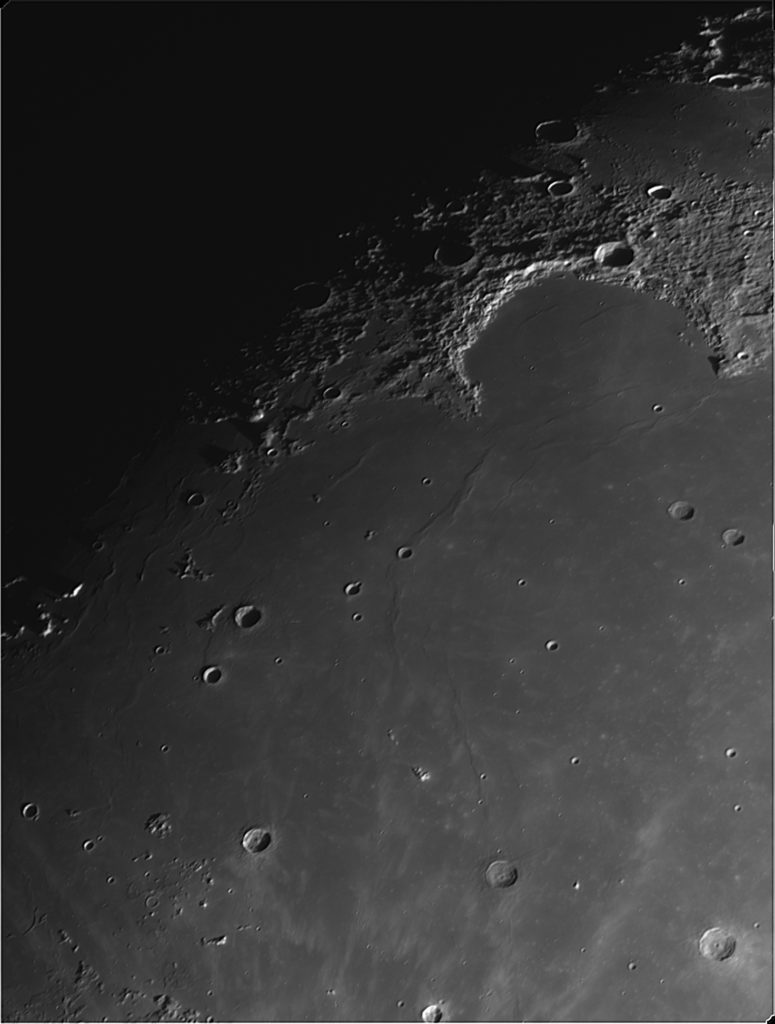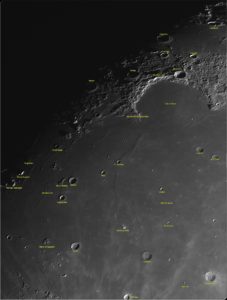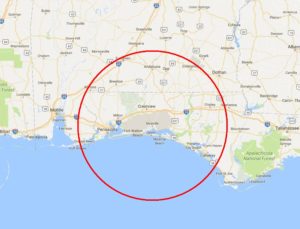Although the bottom portion of this image is largely Mare Imbrium (The Sea of Rains) what I was concentrating on was catching sunrise in the large circular area towards the top and just right of center. This area is Sinus Iridum (The Bay of Rainbows). The ‘bay’ is a 236 km (146 mi.) crater that predated the impact that formed Mare Imbrium. The crater was flooded by basaltic lava that resulted from the much larger Imbrium impact.

There are very few named craters in the bay, but several surface ridges called dorsa are visible. A dorsum is a ridge formed when the lava cools and contracts.

|
Sinus Iridum, along with most large features of the Moon, were named by Giovanni Battista Riccioli (1598-1671). Riccioli was an Italian Jesuit priest who included the names as well as detailed maps of the Moon in his seminal work, Almagestum Novum (New Almagest). Published in 1651 and consisting of 1500 pages, the work was used as an astronomical reference for many decades. His names and naming conventions are still used today.
